The marketing mix is a concept including a set of controllable marketing tools that can be employed by companies. These include product, price, place, and promotion, as the elements vital for achieving success (Kotler et al., 2019). The features of the products or an offered service can be used in the marketing mix as establishing a specific price or adding a product might make the company more popular among clients. This idea also correlates with the concept of the product life cycle, including introduction, growth, maturity, and decline (Kotler et al., 2019).
Applying the basic assumptions of the marketing mix, it is possible to select the appropriate price, promotion, and placing strategies during different stages to ensure the highest level of sales and support the clients’ interest in a product (Iacobucci, 2017). This will guarantee higher profits and enhanced customer relations.
The company can also select direct and indirect distribution channels to move its products. The first one implies the manufacturer controlling all aspects of distribution and selling goods directly to a customer. The second one means that third parties are needed, such as retailers (Kotler et al., 2019). The choice depends on the current goals and firms’ resources. At the same time, intensive distribution means saturation coverage of the market by using all available outlets (Kingsnorth, 2019).
It is usually used in areas with a diversity of choice. Selective distribution involves the use of a limited number of outlets to sell products or services, allowing the firm to use the most effective method (Kotler et al., 2019). Finally, the exclusive distribution presupposes that only one distributor is used for the area (Kotler et al., 2019). The market coverage can be organized by using one of these models.
To be successful, a company should preserve the high level of client’s interest, which is possible by creating the lifetime value. Using the concept of the customer life cycle, it is possible to ensure individuals remain loyal. It includes the five aspects, such as reach, acquisition, conversion, retention, and loyalty (Kotler et al., 2019). The value can be created by influencing these areas and ensuring the product meets clients’ expectations during all stages. The lifetime value can allow the company to use the direct marketing channel. This approach has several advantages vital for a business, such as better creation of relations with new clients, increasing sales, build higher loyalty, testing a new product or service (Perreault et al., 2021). In such a way, this method can help to generate additional profits for a company.
The effectiveness of the proposed methods is evidenced by real-life examples. For instance, Adidas effectively uses the idea of product mix by promoting its goods, using effective distribution channels, and focusing on building a lifetime value by cooperating with clients (Adidas, 2021). At the same time, it focuses on place, ensuring that clients have opportunities to buy products comfortably. Adidas uses online platforms and its warehouses to ensure the high effectiveness of its strategy (Stanciu, 2021). Altogether, the effective use of marketing mix, available distribution channels, and collaboration with clients to create value should be viewed as the fundamental elements needed to attain success and ensure the company manages to generate a competitive advantage and evolve.
Price is an important element of the marketing mix that should be considered by a company. Effective pricing strategies might help to retain clients and generate profit, while the ineffective ones can repel potential customers and contribute to the company’s failure. For this reason, pricing should reflect the perceived value of the benefits of a particular product to the buyer. Setting a price, companies should consider costs the public is ready to pay for a proposed good or service (Marshall & Johnston, 2021).
It means that too high price not reflecting the real conditions of the market will result in decreased sales. Firms should analyze the target audience and the environment to determine the value of services and establish a relevant price. At the same time, cost-based pricing might also help to calculate the final cost of a product sufficient to cover manufacturing and delivery spending (Marshall & Johnston, 2021). It will help to avoid disbalance and fill the existing organization’s needs. Combining these two strategies, it is possible to establish the price attractive both for clients and producers.
Adjusting the price might have positive effects on the work of organizations. For instance, considering the existing demand for a product, its quality, and value, the company might increase the price, which will result in a growing level of revenue. At the same time, too high costs might increase clients’ dissatisfaction and reduce their desire to pay for a product. For this reason, adjusting the price, it is vital to find the balance:
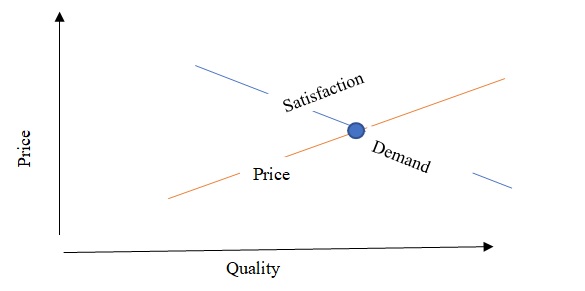
The diagram shows that the fair price should consider the quality of a product, demand for it, and the current level of client satisfaction. Otherwise, it will be irrelevant and lead to a decreased willingness to pay.
In such a way, price plays a critical role in the marketing mix and influences the firm’s work. Adidas devotes much attention to its aspect as it has a strong pricing strategy (Adidas, 2021). The brand covers the manufacturing and distribution costs by establishing a fair price for its products. Additionally, effective promotional activities result in the growing popularity of its products, meaning that they can increase costs because of the high value and readiness to pay. It means that price remains central for the brand’s work and its dominance in the market.
Promotion is another critical element of the marketing mix. It focuses on popularizing the offered product and increasing its value for clients (Marshall & Johnston, 2021). The promotional campaigns launched by brands usually emphasize the qualities of the product, its importance and significance for the audience, and its advantages compared to other brands (Pomering, 2017). The success of such activities is usually measured by the alteration in the levels of clients’ interest, product popularity, and discussion in various media (Pomering, 2017). At the same time, promotional activities are regulated by the law. For instance, the Federal Trade Commission controls advertising and marketing in the USA to ensure no discriminative, unfair, or unethical methods are used.
Promotion is a critical element of the marketing mix and the work of companies. For instance, Nike managed to become a global leader due to its strong promotional activities. The slogan “Just do it” became one of the recognized elements of the brand’s image and contributed to the alteration in other elements, such as price and place (Nike, 2020). It means that by focusing on developing effective promotional campaigns, it is possible to attain success and generate a competitive advantage vital in terms of fierce rivalry.
In modern organizations, people should be viewed as the most important asset ensuring the attainment of current goals. For this reason, speaking about the marketing mix, this aspect should also be given much attention as it influences all elements of the concept. Recruitment of the right people and their training might guarantee increased effectiveness during all stages of product production and delivery, increase customer satisfaction, and raise revenue (Valentine et al., 2019). That is why it is vital to focus on improving the given element of the organization’s work. The following factsheet proves its significance in companies:
The process of looking and hiring new specialists that would help the company to grow and increase revenue.
Recruiting the right people is a complex issue:
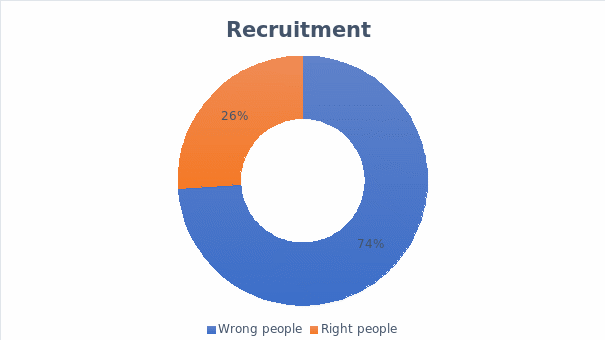
74% of employers report hiring the wrong person for the available position (Picardi, 2019).
Selecting appropriate specialists:
- Improves outcomes.
- Boosts effectiveness.
- Helps the company to become customer-oriented.
- Enhances the company’s image.
- Minimizes clients’ claims.
- Saves costs.
Skilled customer-facing staff advantages:
- Better communication with clients.
- Increased customer loyalty.
- Higher level of sales.
- Reduced response time.
- Better vision of current clients’ needs.
- Discussion of potential claims and their resolution (Noe, 2019).
Training customer-facing and non-customer-facing staff
Training staff helps to make them more engaged in the work of the company. At the moment, engagement levels differ as 45% remain disengaged (Valentine et al., 2019)
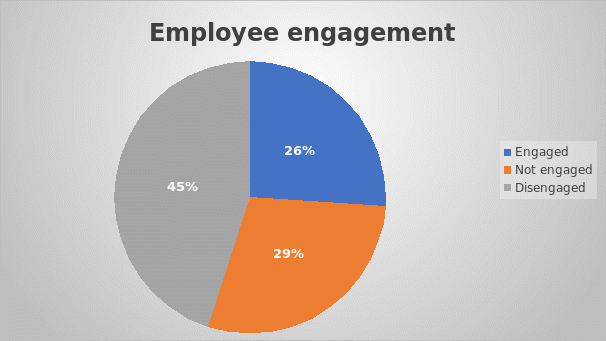
Training all types of staff helps to:
- Increase employees’ engagement.
- Acquire better results.
- Manage adverse effects of human factor.
- Promote better relations within the collective.
- Align effective communication.
- Raise motivation.
- Create the basis for positive change (Picardi, 2019).
Statistics show:
- Companies with regular trading for staff are more successful.
- Organizations investing in staff training generate a competitive advantage.
- More experienced staff helps to save money by reducing mistake rates.
- Trained staff creates the basis for innovation and change (Noe, 2019).
Customer Relationship Management (CRM) in Business
CRM implies strategies, tools, methods, and technologies employed by organizations to acquire, retain, and cooperate with clients (Buttle, 2019). For business, effective CRM means effective work with customers, consideration of their needs, and building long-term relations vital for stable development.
Benefits of using CRM
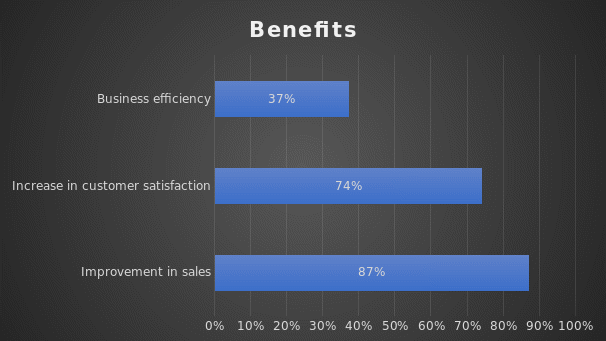
- Companies using focusing on developing CRM increase their efficiency by 37%.
- Customer satisfaction grows up to 74%.
- CRM promotes improvement in sales up to 87% (Buttle, 2019).
CRM use at the moment
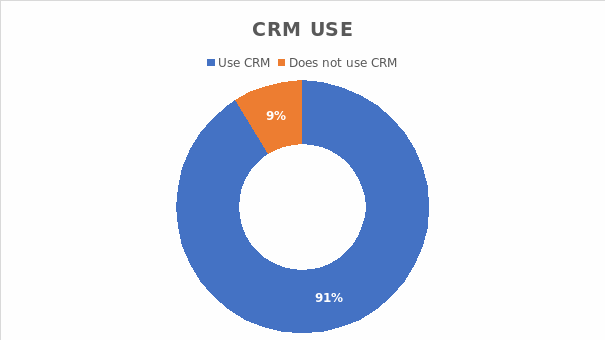
- 91% of business with more than 11 employees employs CRM practices today.
- It leads to boosted effectiveness and improved outcomes.
- There is a tendency towards the growth in CRM use rates (Buttle, 2019).
Adidas Example:
- People are viewed as a valuable resource.
- Focus on hiring appropriate people.
- Continuous training for all staff members to boost their effectiveness.
- Checks to ensure employees meet the company’s standards.
- Monitoring of the current performance levels (Adidas, 2020).
Adidas’ focus on customer relations and staff training contributes to establishing a positive environment within an organization and the generation of competitive advantage. At the moment, the brand is one of the leaders in its sphere:
- Holds about 14% of the market share globally.
- Continues to increase its presence in different regions.
- Launches new projects to empower its position.
- Hires new staff to work in new offices and warehouses.
- Offers additional training for them (Adidas, 2020).
Altogether, the factsheet proves that people remain a vital element of the market mix. Focusing on hiring and staff training, it is possible to significantly increase sales and enhance the brand’s effectiveness. For this reason, this aspect should be given much attention as one of the ways to generate a competitive advantage.
The process and physical evidence are the other two elements of the marketing mix that should be considered. These two elements ensure that the products are delivered appropriately and clients remain satisfied with the quality of services. For this reason, it is vital to ensure the correct understanding of how to deal with these elements and cultivate them.
The marketing process consists of four major elements. These include strategic analysis, marketing mix planning, marketing implementation, and control (Mukherjee & Shivani, 2016). At the same time, in the presence of the customer, the delivery of products, their sales, and feedback become vital parts (Buttle, 2019). It is essential to focus on improving the given aspects as the critical requirements to increasing client satisfaction and readiness to return and make a new purchase (Pomering, 2017). Otherwise, the brand will suffer from a decline in its revenue. At the same time, marketing processes should also occur before and after the customer interface. It presupposes the strategic analysis of the existing demands and clients’ requirements for existing products as the key factors needed to raise sales and attain the desired outcome. Data acquired due to these activities will help to create the basis for increasing clients’ loyalty and attract new individuals by meeting their demands.
In such a way, process plays a critical role in the marketing mix. Moreover, it also helps to attain a better customer focus. As stated previously, the analysis leads to an understanding of the target audience and their demands for the delivery of products and their qualities. For this reason, the company devoting much attention to these aspects might acquire the customer focus which is needed for retaining loyal clients and attracting new ones. Physical evidence is another important element of the marketing mix as it offers credible evidence of the high quality of products the company offers at the moment (Marshall & Johnston, 2021). It helps to make services or goods more attractive for clients who do not have the experience of cooperating with the brand or hesitate about making a purchase.
The critical importance of process and physical evidence can be proven by real examples. For instance, Nike devotes much attention to these two elements and views them as fundamental for future achievement. First of all, the brand constantly improves the ways to deliver goods to clients, which results in desired convenience and their readiness to buy again (Nike, 2020).
Second, it analyzes the current experiences and feedback as its social media presence allows the brand to interact with customers and remain in touch with them. By focusing on these two elements, Nike manages to create the basis for future improvement and ensure individuals will remain loyal (Fioravanti, 2020). Additionally, the brand focuses on physical evidence by providing proof of its products’ high quality and their ability to meet clients’ diversified demands. These actions make Nike a highly competitive company with stable positions in the global market.
Altogether, process and physical evidence are two important elements of the marketing mix guaranteeing a high level of clients’ interest. It is achieved by analyzing their current demands, visions, and diversified requirements. For this reason, for brands, it is vital to focus on cultivating these aspects and establishing the paradigm presupposing the constant improvement of the marketing mix by affecting all spheres of the organizations’ work. It will help to create the basis for new achievements and overcome the closest rivals present in the market.
References
Adidas. (2021). Annual report. Web.
Buttle, F. (2019). Customer relationship management (4th ed.). Routledge.
Fioravanti, R. (2020). Nike: Just do it. Differently!. HBS. Web.
Iacobucci, D. (2017). Marketing management (5th ed.). Cengage Learning.
Kingsnorth, S. (2019). Digital marketing strategy: An integrated approach to online marketing (2nd ed.). Kogan Page.
Kotler, P., Keller, K., Goodman, M., Brady, M., & Hansen, T. (2019). Marketing management. Pearson.
Marshall, G., & Johnston, M. (2021). Marketing management. McGraw Hill Education.
Mukherjee, S., & Shivani, S. (2016). Marketing mix influence on service brand equity and its dimensions. Vision, 20(1), 9–23. Web.
Nike. (2020). 2020 annual report and notice of annual meeting. Web.
Noe, R. (2019). Employee training & development (8th ed.). McGraw-Hill Education.
Perreault, W., Cannon, J., & McCarhty, J. (2021). Essentials of marketing. McGraw-Hill.
Picardi, C. (2019). Recruitment and selection: Strategies for workforce planning & assessment. SAGE Publications.
Pomering, A. (2017). Marketing for sustainability: Extending the conceptualisation of the marketing mix to drive value for individuals and society at large. Australasian Marketing Journal, 25(2), 157–165. Web.
Stanciu, T. (2021). 5 key takeaways from Adidas’ social media strategy. Social Insider. Web.
Valentine, S., Meglich, P., & Mathis, R. (2019). Human resource management (16th ed.). Cengage Learning.
